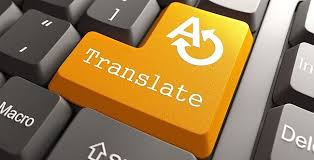Translating Your Website? Keep These Tips in Mind
Medical Pharmaceutical Translations • Aug 1, 2016 12:00:00 AM

First, do your research
Knowing your core target markets is the first step. Learning cultures, trends, beliefs, and the like, is almost more important than translating into another language. For, no matter how great your translation is, if you don’t know the nitty gritty of a culture, any translated words could fall flat and your investment into the international market could fail.
There are even online tools, such as Google Global Markets Finder, to aid you in finding business opportunities around the world using search data and keywords. You can see the language and trends of your target countries.
But don’t rely just on online sources and technology. You have to check in with those who will be affected by your product/program/service. Talk to people in those markets in those countries to get first-hand accounts. Gain knowledge from people in your line of work. Talk to a translator who is from the target country. Talk to marketers and people who know how to sell a product in that country.
Then, double check your source
After delving into the core markets, you will have a better handle on where you want to concentrate your efforts. Now, double check your source website. How is the grammar, spelling, diction? Make sure it is error free before beginning translation.
Translate away…but remember…
Using a qualified translator is the most important piece of the puzzle. In addition to translating your source document as accurately as possible, he or she will know if your target language’s words will be longer or shorter once translated. For example, German’s 30 letter word for “speed limits”, Geschwindigkeitsbeschränkungen, is going to use up quite a bit more space on your web page. A good rule to remember is to leave space for expansion or contraction. 35% is a good number to go by.
It takes more than translation
Be sure to concentrate on more than simple translation. Keep in mind the font and layout will matter. Your Arabic audience will read from right to left, for example.
If you are selling products, be sure to use the payment methods that the country(ies) use most often. And make sure all prices and currency symbols to match the conversion. The US dollar ($) symbol and the UK’s pound (£) symbol both come before the price whereas the European Euro (€) comes after.
The colors will matter as well. For example, color means very different things to different cultures. In Western culture, the color red generally stands for love and action. In India, it symbolizes beauty, wealth and power. Red is used to indicate prosperity and good fortune in the Far East, however, be careful using red in your marketing to Middle eastern cultures where it symbolizes danger, caution and evil.
Get the SEO out
Once you have translated your website, you can then focus on search engine optimization, or SEO. Here are a few things to remember about the structure of your URL.
Top Level Domains use endings that indicate the country you are targeting, such as .fr for France, .au for Australia, .de for Germany, or .ca for Canada.
Sub-domains can be used to localize by language and country, such as de.companyname.com.
Sub-directories such as companyname.com/fr allow you to use various alternate URLs. These are best to localize by language and country, as with sub-domains, but they also share cookies across all locales.
According to searchengineland.com, the best option is to use either a subdomain or directory structure, because “from an SEO and analytics tracking perspective, things can get very messy when you have multiple top-level domains.” And it can get pricey as well.
According to Google, if your time and resources are limited, consider buying one non-country-specific domain, which hosts all the different versions of your website.
Watch Language annotations
Google offers different ways to indicate the language of your website. You can:
Insert a HTML link element in the headerof your website. This indicates that companyname.com/fr is the French version of your website.
Use a HTTP headerwhen publishing non-HTML files.
Or submit a sitemapwith information about the different language versions of our website to Google Search Console.
Use Keywords
In order to be ranked highly on search engines, keywords are the “key.” To starts, you may simply translate the same keywords you already use. Also, check your keywords against Google’s Keyword Planner. You may even find more words you can use to increase your website exposure!
Following these tips will help ease your transition into new markets and hopefully help you gain clients all over the world. Good luck!
(Ilona Knudson)
